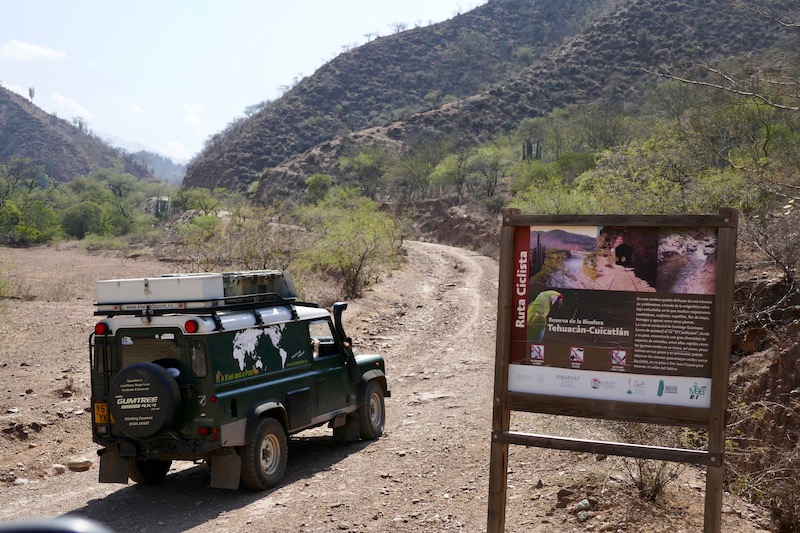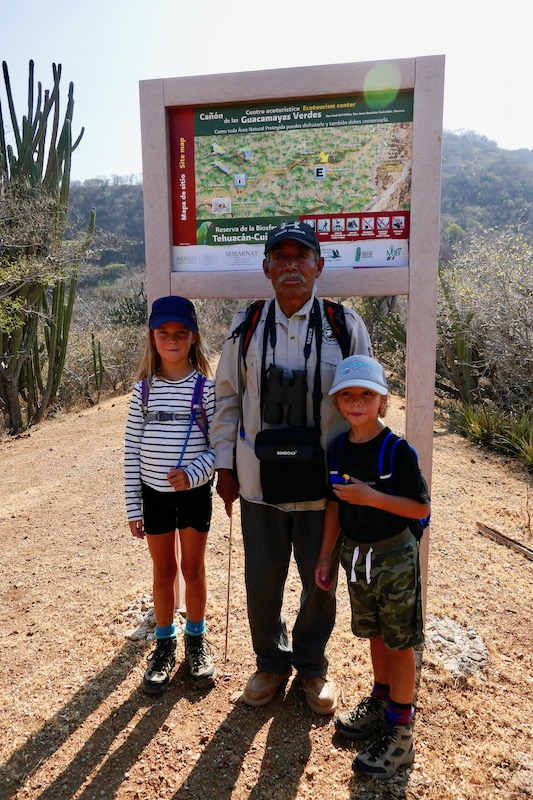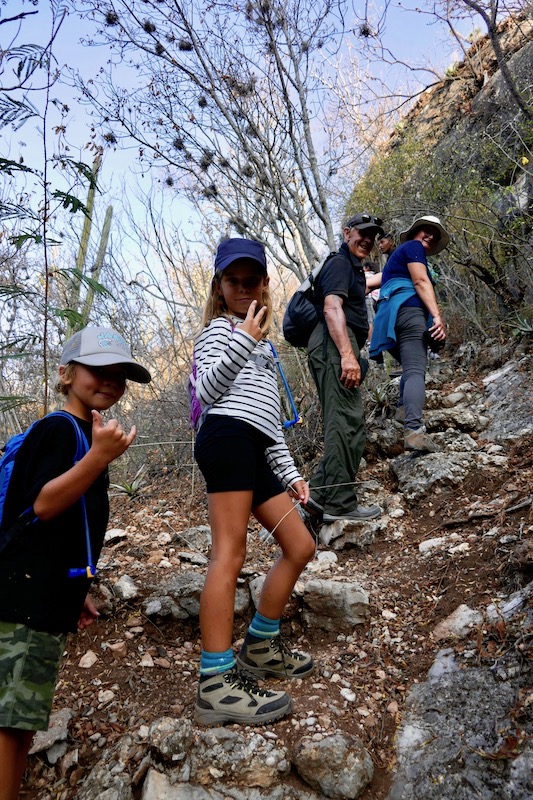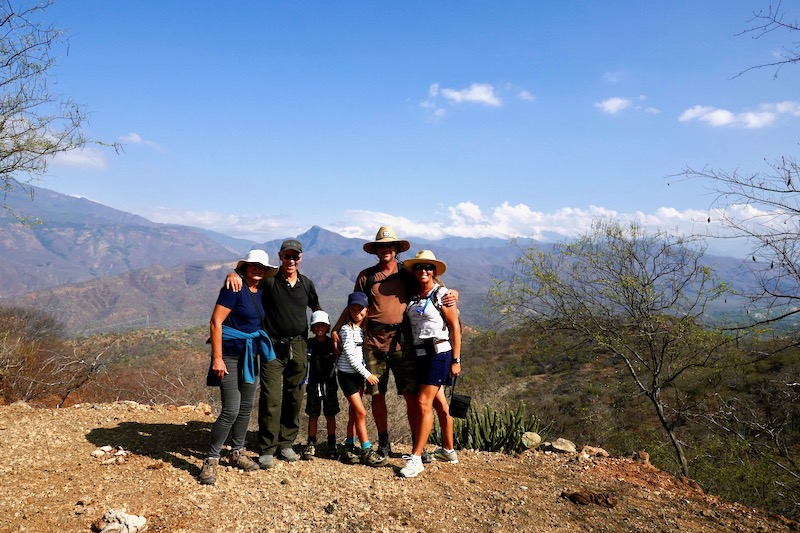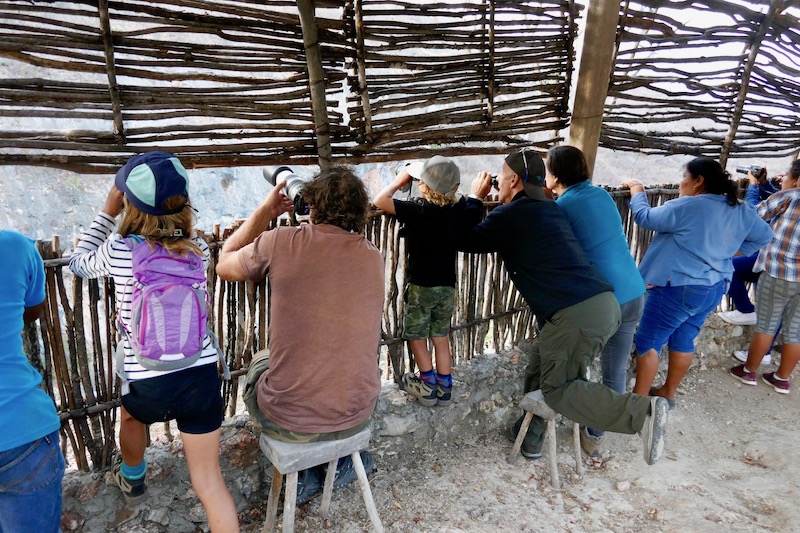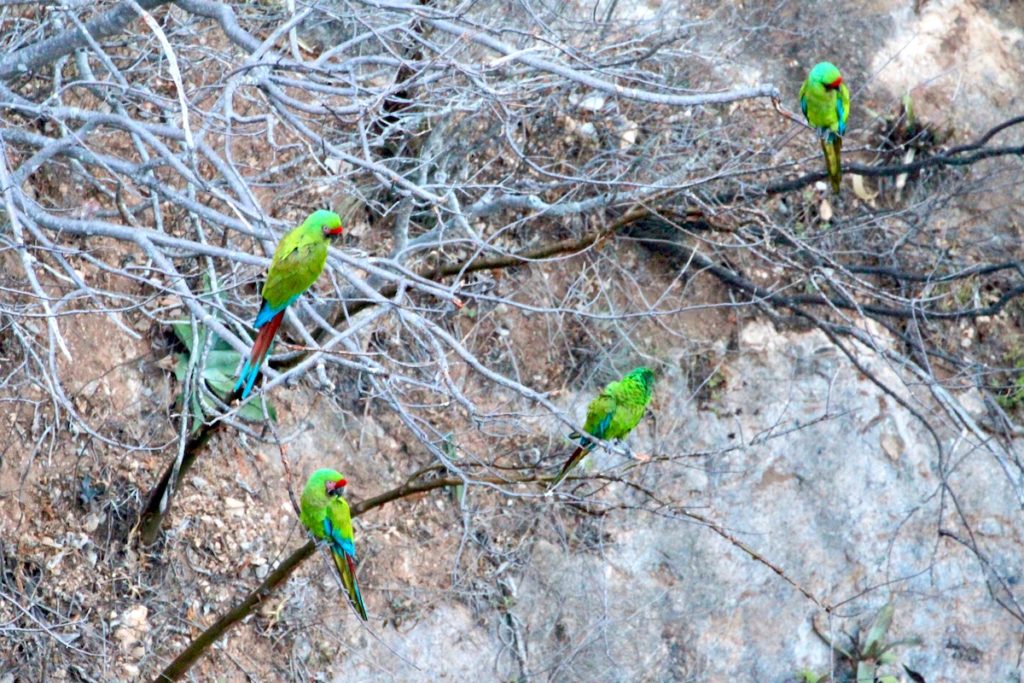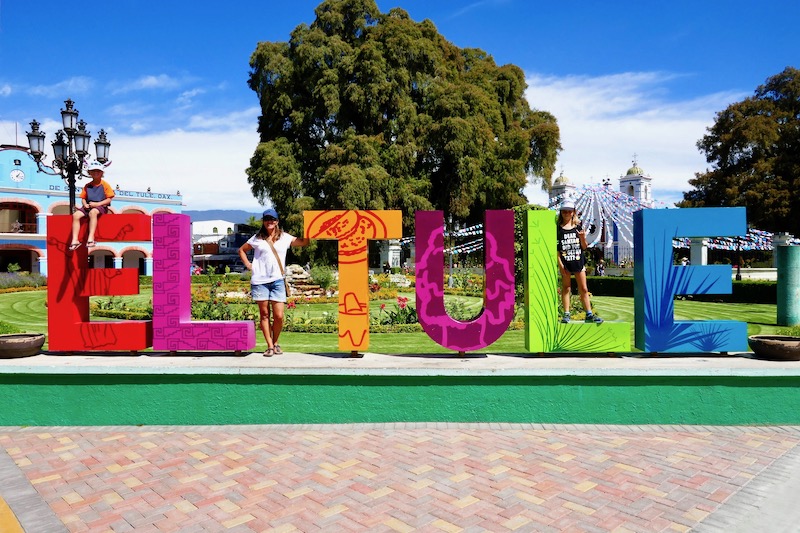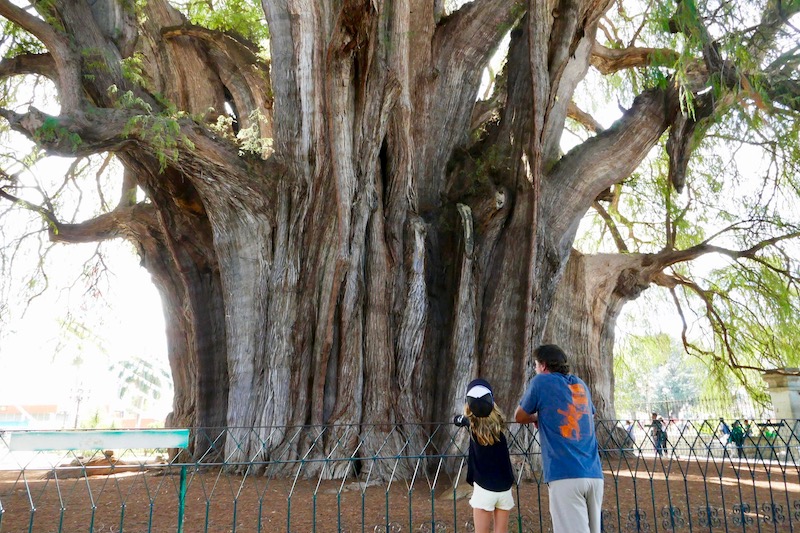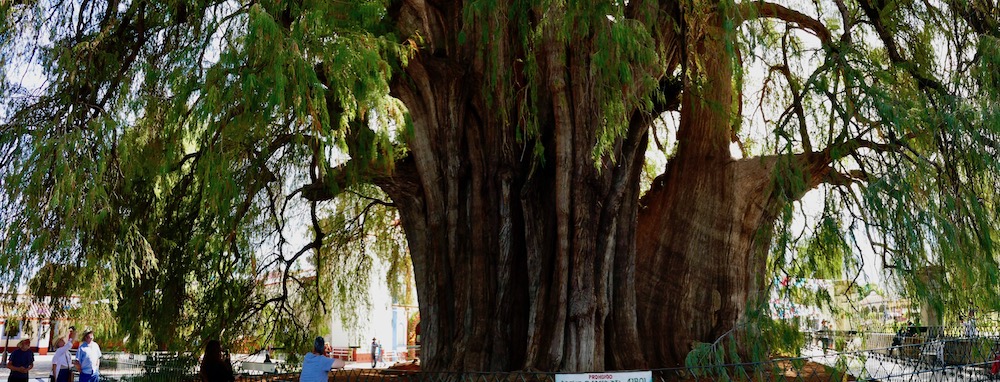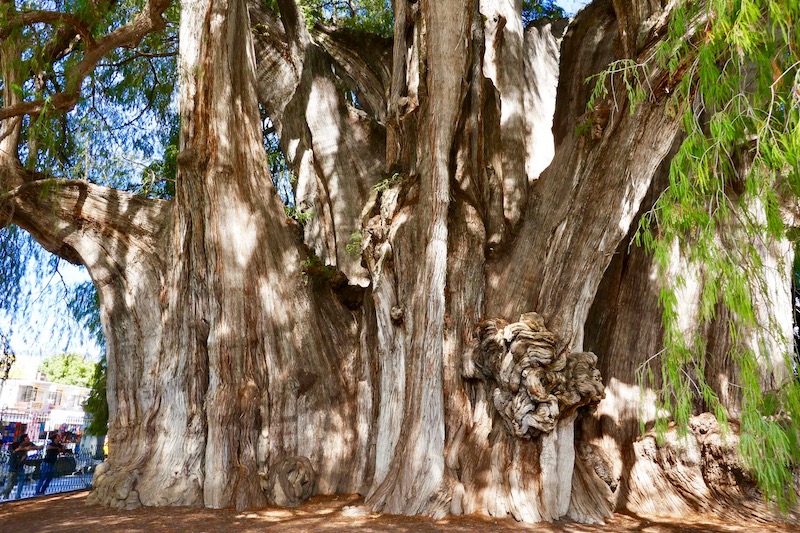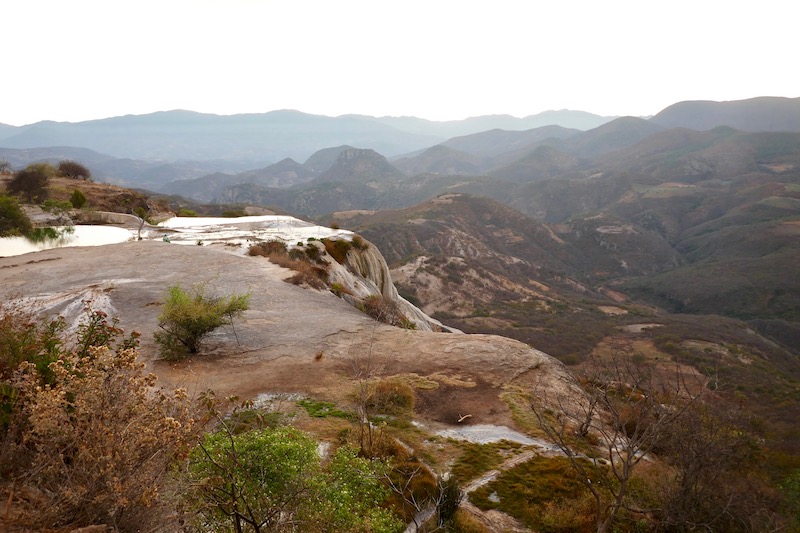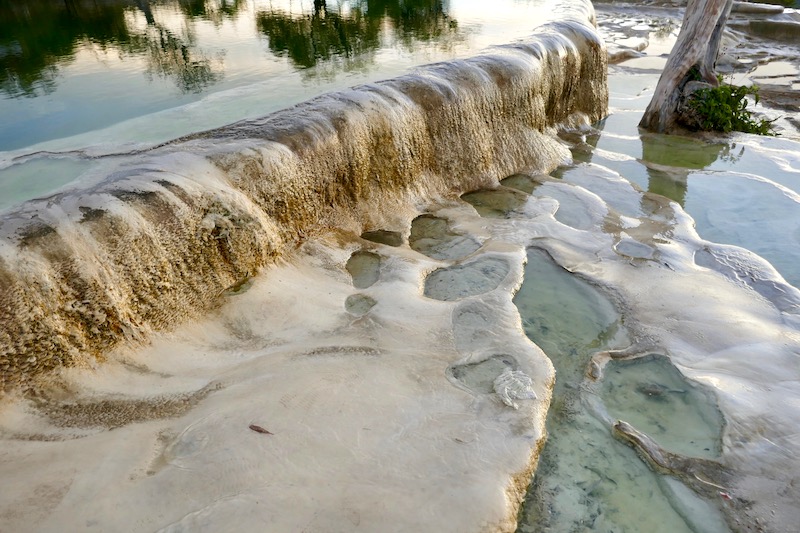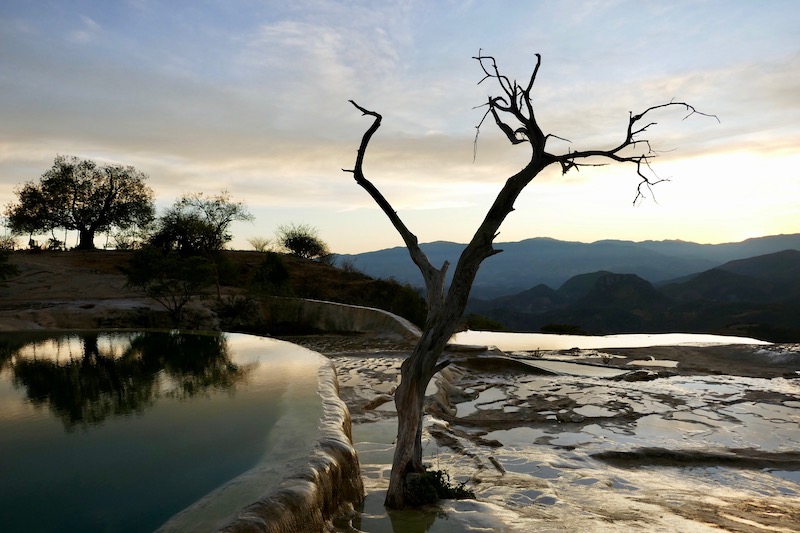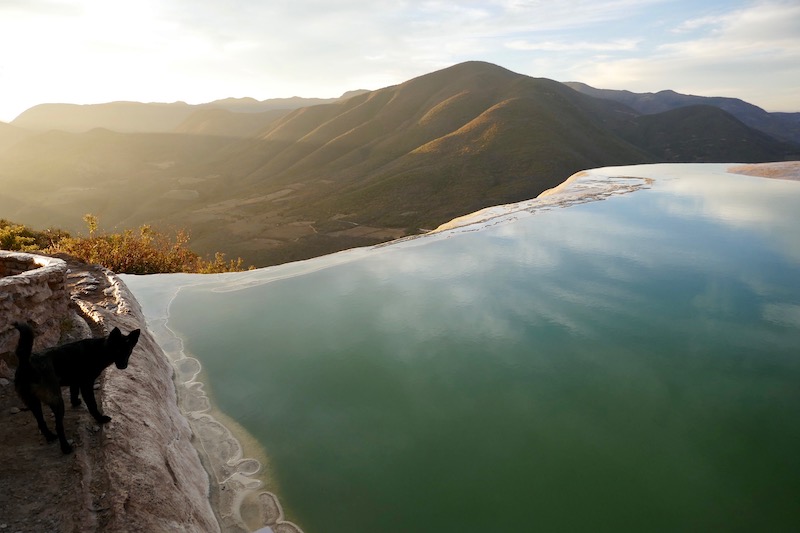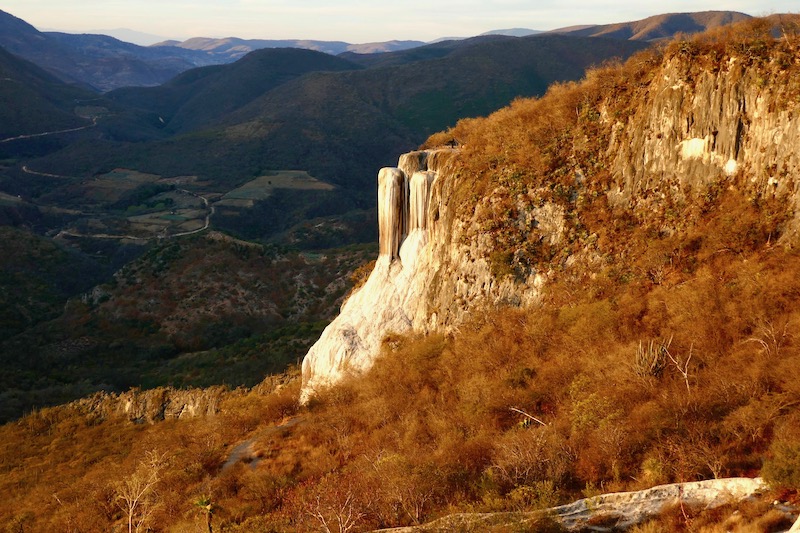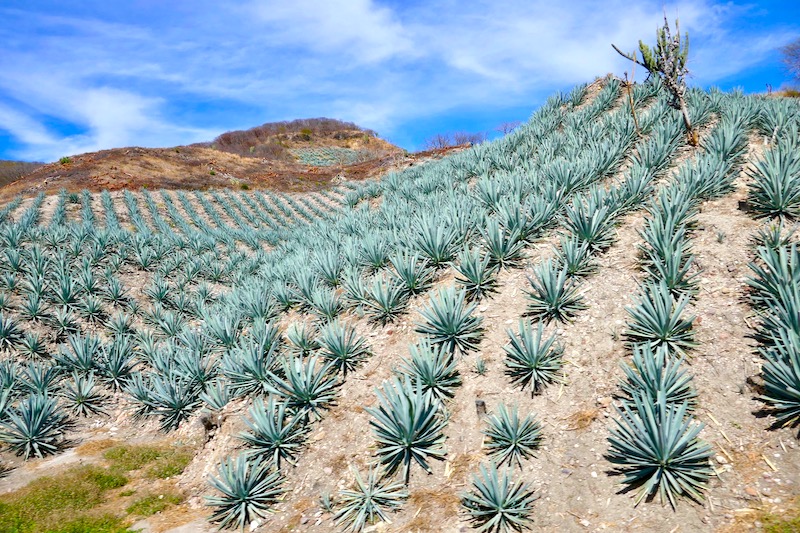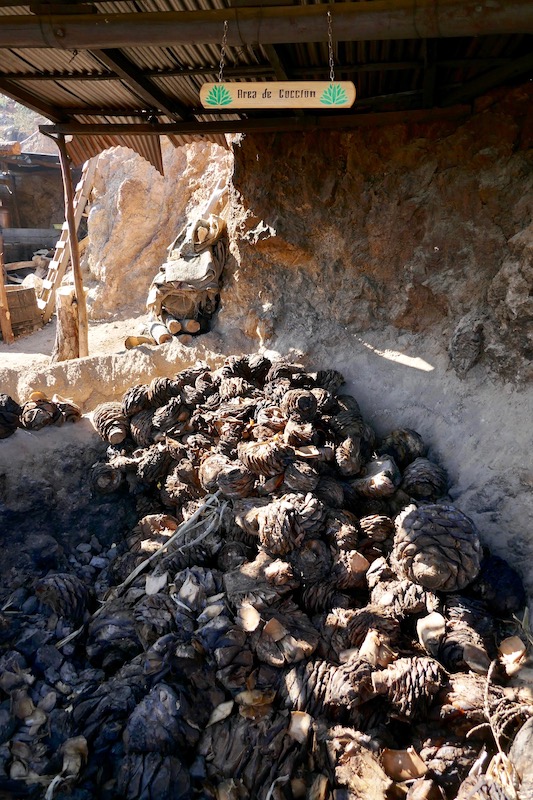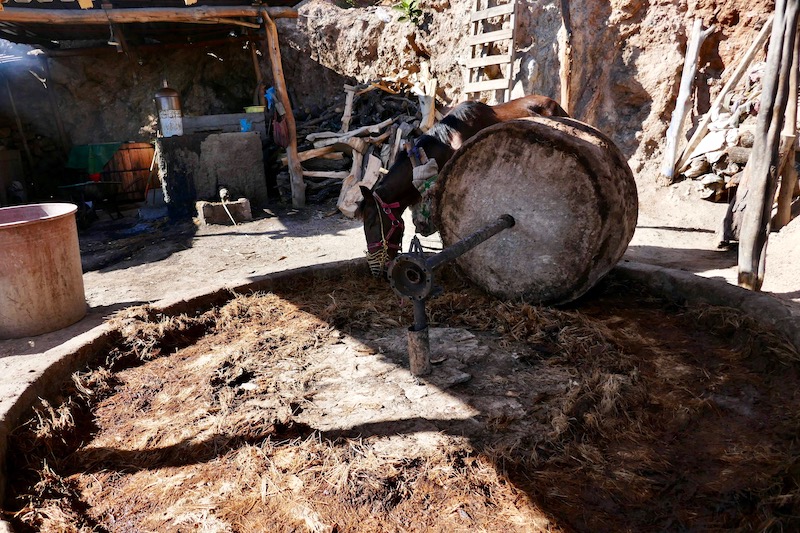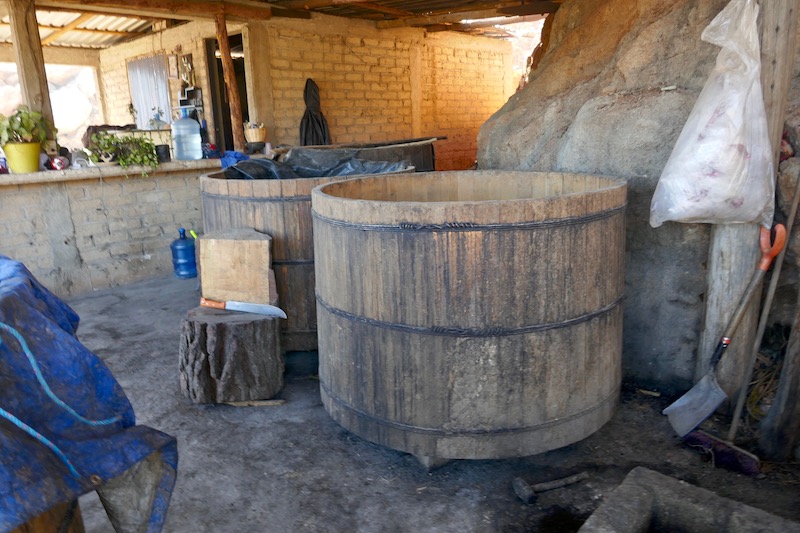Tim had read on Ioverlander about the Guacamaya Verdes, the Green Military Macaws. That it was a guided six hour round trip hike to the place where the Macaws return to each night to sleep. Well this family of bird lovers agreed it was a must do. So i fired off an email to make arrangements, we arrived at the said location, got ourselves organized, piled into Dad’s Land Rover and set off up a very steep and bumpy road behind our guide in his well used, 2×2 Nissan truck, with a load of rocks in the back to help with traction. It was a steep bumpy dirt track, we were amazed that he actually made it. Grateful we were not having to be hiking, the trail is 6km each way, the first 2 km has most of the elevation gain, and in the searing afternoon sun, I doubt any of us would have made it.
The trail to the ‘blind’ was along a well worn, single track tapering along a dry dusty mountain sized hill for another hour. The kids found a black Scorpion sitting on a rock at perfect hand touching height. Our guide was emphatic we stay away, as a sting from it could prove fatal as we were more than 3 hours from getting medical attention. Yikes!!! Note to self, TOUCH NOTHING!
Once at the blind, we sat and waited, we were still a fair distance away and needed binoculars to really see them, and will probably only see them for 30-40 mins as its dark by 6:30pm. Then, off in the distance we could hear that distinctive parrot squark, coming over the ridge, playing in the air like a bunch of kids on their way home from school, flying in to nest for the night. We saw 5 families, 25 birds in total. They perched in the bare trees above the cliffs, preening themselves and each other. Something would startle them and off they would fly in perfect unison, it was one of those National Geographic moments i’ll never forget. The under side and wing feathers are a brilliant yellow, with blue, yellow and green feathers of their backs and wings. Several years ago their nesting numbers in this region were counted at 160. From what I could gather, they are now categorized as an endangered specie, their biggest predator, I thought would be poachers, is apparently the Iguana. Our guide Senior Isidiro only spoke Spanish, so some of the details could have been lost in translation.
As much as we love watching the birds, darkness was creeping in quickly and we had to get the kids out of the more sketchy part of the trail before it was pitch black. Happy to be on the return side, the kids moved surprisingly fast, it was all down hill, the last 45 mins we used headlamps. Back down in the LR we camped the night on the property of our guide for a small fee of 100p. Behind the locked gate we slept deeply….until, around 1am when I awoke to the sound of Charley emptying the entire content of her stomach all over the floor. Poor kid, this kind of bug really doesn’t want to let go. Thankfully she was able to make the hike, as she was then down for the next 24hrs.
We arrived the next day into El Tule, just outside of Oaxaca city. The plan is to spend a few nights, go visit the worlds largest tree, get some laundry done and relax a while. Overland Oasis is the name of our RV park, which isn’t an RV park in the traditional sense. It’s actually the personal property of a now living full time her Canadian couple from BC now living full time here for the past 10+ years.
Yup, that’s a BIG tree, its claim to fame is that it’s the largest, in circumference, 54 meters, tree in the world. It looks like 5 or 6 trees that have all grown together over the past 2,5000 years! Whatever it is, it’s big.
Looks like there is going to be some sort of Festival here tonight as people are buzzing around setting up. Our hosts tell use not to miss it as the entire town comes out to enjoy, but it doesn’t kick off till near midnight, way after my bed time, but we stay up and venture in at 11. Teenagers are running around the plaza with home made paper bulls loaded with exploding fireworks over their heads. With each turn the bull got bigger and fireworks more intense. The final bull was on wheels and took 4 men to manoeuvre, with fireworks spinning off its head, butt and horns with greater intensity, that should have been my cue to step back as the next moment, as the bull passed where I was standing, the belly burst open with a massive amount of fireworks exploding on to the ground and bouncing up all around us. It was a moment of mayhem as everyone was jumping out of the way, I noticed Stewart, another camper, down on the ground, having not paid any attention to myself, i was suddenly on fire, my lovely new Arcteryx down vest melting and white feathers flying everywhere. Then the sting of the burn, several holes in my hoodie and a burn at the back of my arm. Nothing serious, but it did put me in a grumpy mood. The next morning Tim patched up my jacket with kite tape. Stewart took a cracker to the face breaking his glasses and leaving a cut on his forehead. Not at all the controlled environment we are so accustomed to in Canada. The main event was a 40ft tower with many levels and layers of fireworks, all hand made and tied, and detonated perfectly, apart from the one that came flying off the top and directly toward me. This time i did jump out the way, it landed in the flower garden right next to where i was standing. Home by 2am, it was a fun, but crazy night.
From El Tule we headed over to Hierve el Agua, a place where the water seeping out of the ground has a high content of silica that slowly collects on top of it’s self. Resulting over time in terraced pools before cascading over the edge forming what is now called the ‘frozen waterfall’. Similar to the ones in Pamukkale, Turkey, but much smaller. We camped there the night, didn’t find anyone to pay or ask, so we went to bed, 10pm headlights came blazing into the truck, with a man demanding we pay 50 pesos each to camp, we paid and were left alone. To be honest, we didn’t find it that nice, the water was dirty, too many people who start to arrive by the bus load at 7am, and an excessive amount of vendors selling everything from coconuts & t-shirts to handcrafts found all over the country.
Moving on we drove through Agave growing – Mescal making country. Fields of Agave planted on every available space. When the plant is of size, it’s harvested and roasted before being crushed and juiced by horse powered millstone. Fermented 15 – 20 days before being distilled. The process is rather crude looking, how i’d imagine a back water moonshine operation would be. We stopped for roadside taste test, it was as strong as moonshine too!

